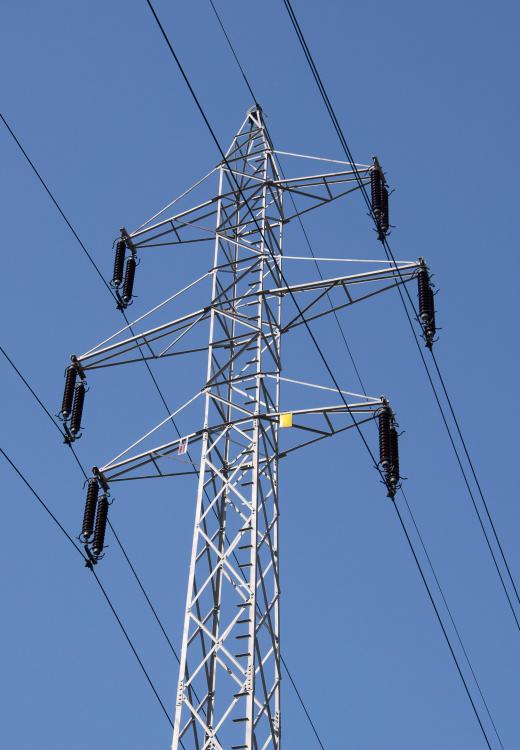A transformer load refers to two different things; the device connected to the output of the transformer that regulates its power output or the amount of voltage currently flowing through the system. A physical transformer load is connected as a secondary system to the transformer. This system keeps the output of the transformer steady by absorbing power in excess of a certain amount or supplying power when it dips under a specific amount. The power-based transformer load is a reference to the tolerance and capacity of the transformer.
A transformer is a system that moves energy from one system to another, such as the transformer on a standard power grid. These transformers, often gray boxes on the ground or cylinders on a pole, connect the power company’s system to household systems. These machines bleed power out of the power lines and feed it into smaller wires that travel into people’s homes and businesses.

These systems work through a process called induction. In this case, the two systems are placed near enough to one another that electricity moves from one system into the other. In most cases, the actual transformer coils and the electrical system don’t make true physical contact.
A physical transformer load has the same relationship with the transformer that the transformer has with the wires. The load is a secondary set of coils that allows electricity to move back and forth in the system. As electricity moves from the transformer into the local system, the load takes and supplies electricity. This process is also a form of induction—the load coils and the transformer coils do not touch.
This system provides one basic function; it smooths out the electricity being supplied to the local system. When the transformer is moving too much power, the load removes the access. On the flipside, when it supplies too little, the charged coils allow the load to add extra power to the system. This prevents peaks and valleys in the local system, which will increase the lifespan of connected electronics.
A load does this by providing power to the transformer, not the local wires. The transformer load and local system don’t connect to one another. If they did, it would create a short which would result in a massive power surge.
Transformer load may also refer to the amount of power flowing though the transformer. As the transformer is a power source, it has a specific amount of power for which it is rated and a specific amount of power it is supposed to constantly carry. When the amount of power flowing through a transformer dips under its recommended amount, it can cause a blackout in the local system. If the power exceeds its rating, it can cause an overload and damage the system.
